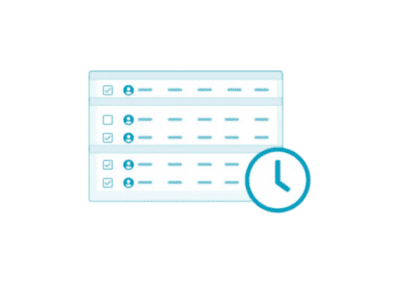WHAT IS PBJ?
The Centers for Medicare and Medicaid Services (CMS) will soon be requiring all nursing facilities to submit staffing information electronically. The CMS has instituted a system for providers to electronically submit their staffing information known as the “Payroll-Based Journal” (PBJ). The CMS has mandated that by July 1, 2016, all skilled nursing facilities (SNF) start collecting and reporting staffing information electronically.
OBJECTIVE
The objective is to drive accountability and consistency in reporting throughout the industry. Total direct care hours worked (including agency and contract staff), employee hire and termination date, and facility census must be included. This information will be used to report the level of staff (hours per patient day) plus employee tenure, retention and turnover – all of which have been found to impact the level of care provided to residents.
REPORTING SCHEDULE
Providers will be required to submit their staffing and census data quarterly. They will have 45 days after the last day in each fiscal quarter to submit – making the due date for the first PBJ submission November 14, 2016.
REPORTING REQUIREMENTS
CMS defines direct care staff as those individuals who, through interpersonal contact with residents or resident care management, provide care and services to allow residents to attain or maintain the highest practicable physical, mental, and psychological well-being. Direct care staff does not include individuals whose primary duty is maintaining the physical environment of the long-term care facility. To create an employee record within the PBJ system all direct care employees, including agency and contract staff, must contain the following 4 items:
- Unique Employee ID – must be unique and not duplicated with other current or previous staff and cannot contain personally identifiable information such as social security number.
- Hire Date – the first date of a staff member’s employment – either direct or under contract.
- Termination Date – the last date of a staff member’s employment – either direct or under contract.
- Pay Type Code – this denotes whether the staff member is a direct employee of the facility (exempt or non-exempt), or employed under contract paid by the facility:
- Non-Exempt – entitled to overtime pay
- Exempt – not entitled to overtime pay
- Contract – individuals under contract and individuals who provide services through organizations under contract
CMS JOB CODES
Identifying and assigning a CMS job code to an employee for each and every shift is critical to ensure a payroll-based reporting submission is accurate and in line with CMS’s requirements. CMD has defined 37 job codes to be used when reporting direct care hours worked. There must be a job code attached for every hour submitted through PBJ.
WHAT’S INCLUDED AND WHAT’S NOT?
Knowing what hours should and should not be reported in the PBJ submission is vital to compiling a complete and accurate file for submission. CMS has highlighted instances where direct care hours worked should not be included as follows:
- Hours paid for any type of leave or non-work related absence
- Unpaid overtime – if a salaried employee works 10 hours but is only paid for 8, only 8 is counted.
- Hours for services performed that are billed to FFS Medicare or other payer
- Hours providing services to residents in non-certified beds. For example if nursing home staff is shared with an assisted living community, only those hours dedicated to the residents of the nursing home shall be
For hours that should be part of the PBJ submission, the challenge will be to gather and aggregate staffing data from different sources. Direct care hours are typically tracked through time and attendance systems. However some systems don’t track all of the data you need to compile an accurate submission. It is important to identify instances where direct care hours aren’t captured within your time and attendance solution. Examples of these instances include:
- Contract and Agency Staff
- Corporate Staff at a facility performing activities that fit into a CMS job category (e.g. when a Director fills in for a nurse on vacation)
- Salaried staff who don’t clock in/out
Contact us today to talk to us about how we can help you become PBJ ready.




